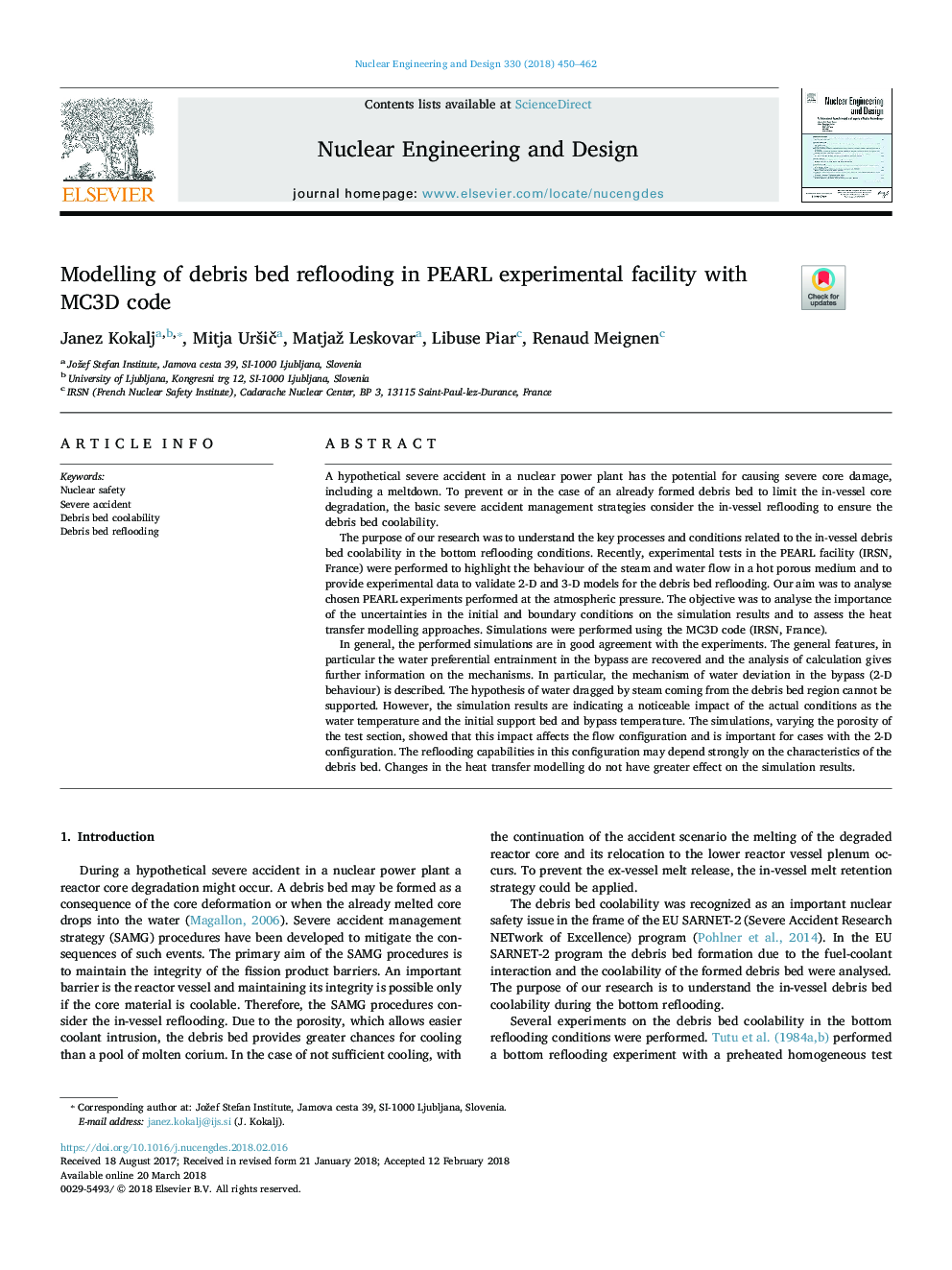| Article ID | Journal | Published Year | Pages | File Type |
|---|---|---|---|---|
| 6759162 | Nuclear Engineering and Design | 2018 | 13 Pages |
Abstract
In general, the performed simulations are in good agreement with the experiments. The general features, in particular the water preferential entrainment in the bypass are recovered and the analysis of calculation gives further information on the mechanisms. In particular, the mechanism of water deviation in the bypass (2-D behaviour) is described. The hypothesis of water dragged by steam coming from the debris bed region cannot be supported. However, the simulation results are indicating a noticeable impact of the actual conditions as the water temperature and the initial support bed and bypass temperature. The simulations, varying the porosity of the test section, showed that this impact affects the flow configuration and is important for cases with the 2-D configuration. The reflooding capabilities in this configuration may depend strongly on the characteristics of the debris bed. Changes in the heat transfer modelling do not have greater effect on the simulation results.
Related Topics
Physical Sciences and Engineering
Energy
Energy Engineering and Power Technology
Authors
Janez Kokalj, Mitja UrÅ¡iÄ, Matjaž Leskovar, Libuse Piar, Renaud Meignen,
